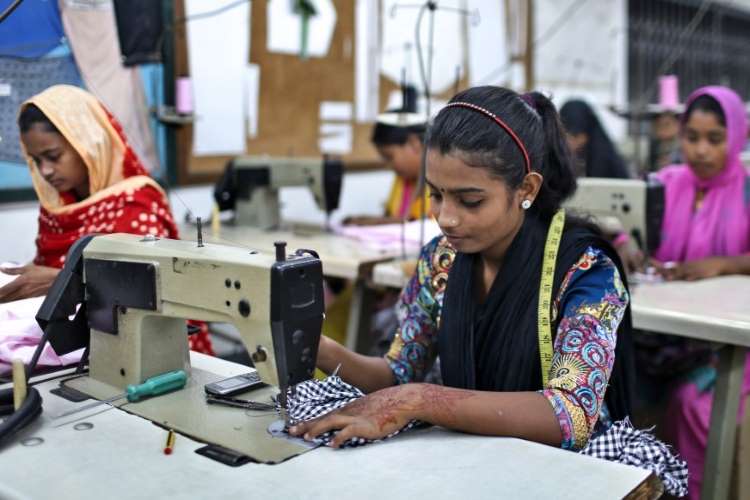
Importance of gender-inclusive trade: I am excited to share insights from my recent research on the intersection of trade and gender, particularly focusing on women’s participation in India’s trade ecosystem. As we delve into the subject of trade and gender, it is important to recognise that today’s trade landscape is shaped not just by economics, but also by geopolitics and geoeconomics. Integrating a gender-inclusive perspective into these efforts could yield enhanced outcomes.
Furthermore, the global focus on gender equality, particularly within the G20 framework, emphasises the significance of centering gender in trade discussions. As the geopolitical landscape evolves, it presents India with unique opportunities to lead and bring a gender-inclusive perspective to the forefront. This is crucial not only for India’s growth but also to meet global expectations for gender equality, especially within the G20 framework.
READ I Govt strives for competition in telecom amid looming duopoly
Post-pandemic gender parity
Before delving into the intricate link between trade and gender, let us consider the pre-pandemic and post-pandemic scenarios. The pandemic has unveiled significant disparities, with women being disproportionately affected due to their overrepresentation in vulnerable sectors. Even before the pandemic, the Global Gender Gap Report of 2020 revealed that women’s participation in the labour market was only 55%, compared to 78% for men. The report projected that achieving full gender parity would take 132 more years, a stark reality that demands our attention.
Delving into the intersection of trade and gender, it becomes evident that research in this area has been constrained by limited data and an inadequate understanding of the various roles women play in trade. Initiatives like the 2020 joint report by the World Bank and World Trade Organisation made preliminary findings, indicating that firms engaging in trade often employ more women and exhibit greater gender equality. However, the broader question of why empowering women matters remains essential.
Importance of gender-inclusive trade
Empowering women in trade carries a plethora of benefits, transcending economic realms. Women’s participation contributes to fairer trade, enhanced supply chain resilience, and a greener future. India’s commitment to gender-inclusive policies, as reflected in its National Trade Facilitation Action Plan, showcases the potential for progress. Initiatives such as the ‘Faceless, Contactless, and Paperless’ Customs program provide an even playing field for women, especially in sectors where they are traditionally underrepresented.
Through extensive fieldwork and visits to various border areas in South Asia, I observed a consistent absence of women in these trade zones. The absence of gender-disaggregated data limits our ability to assess the true extent of women’s participation in cross-border trade. However, qualitative insights gathered from these visits shed light on the challenges faced by women, including their concentration in lower tiers of the trade value chain. Examples from regions such as Amritsar and the India-Bangladesh border highlight women’s resilience and potential when given opportunities.
Policy reforms for gender-inclusive trade
To foster gender-inclusive trade, comprehensive policy reforms are necessary. These reforms span four main categories: skilling, training, and mentoring of women; reforming trade institutions; pursuing high-level trade policy reforms; and advancing women’s holistic empowerment.
Skilling, Training, and Mentoring: Capacity building and mentorship programs are essential to enable women to transition to higher levels of the trade value chain. This includes financial education, awareness of trade opportunities, and mentorship from experienced professionals in traditionally male-dominated sectors.
Reforming Trade Institutions: Gender-sensitive financing practices and enhanced participation of women in trade interaction forums are imperative. Financial institutions should prioritise gender balance in their staff to better understand and address the unique challenges faced by women entrepreneurs.
High-Level Trade Policy Reforms: Incorporating gender-specific provisions into trade policies and agreements is paramount. Additionally, gender-disaggregated data should be collected and analysed to inform evidence-based policy decisions. Holistic Empowerment: Public investment in the care economy, gender-tagging of projects, and parental leave policies are crucial steps to support women’s holistic empowerment.
Conclusions
Achieving gender equality in trade necessitates multi-faceted efforts. By collecting gender-disaggregated trade statistics and implementing targeted reforms, we can empower women to actively participate and thrive in trade, fostering a more inclusive and equitable global economy.
During my research, I found inspiring examples of progress, such as the recruitment of women in traditionally male-dominated sectors and the implementation of gender-sensitive measures at ports. These instances underscore the transformative potential of trade for women’s empowerment.
Incorporating these recommendations into policy and practice will help bridge the gender gap and create a trade ecosystem where women’s participation is not just supported, but celebrated. By harnessing the power of gender-inclusive trade, we can contribute to a fairer, more resilient, and prosperous global economy.
(Nikita Singla is a South Asia Trade and Competitiveness Consultant with the World Bank. This article is the edited transcript of Ms Singla’s presentation at an online event organised by EGROW Foundation)

